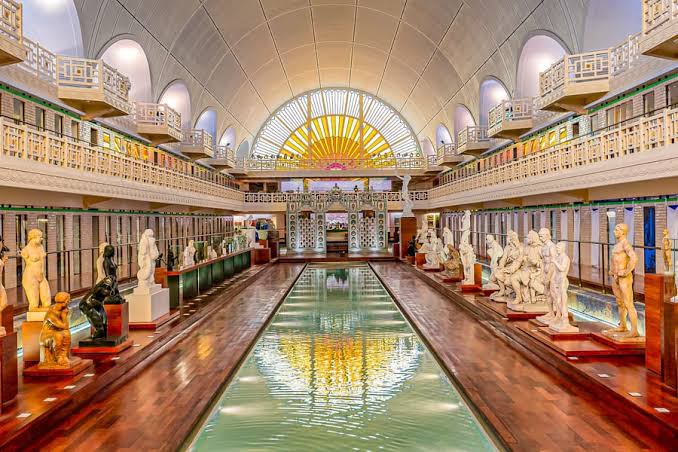
Creating environments that elicit emotion, stimulate creativity, and increase well-being is the goal of interior design, which is more than simply about aesthetics. Interior design trends vary to reflect these new goals as the world evolves through technical innovation, environmental consciousness, and cultural fusion. Each of these factors contributes to the evolution of the world. In the year 2025, we are witnessing a beautiful combination of nature, technology, tradition, and daring self-expression that is taking over homes, offices, and public areas all across the world.
List Of Top 10 Best Interiors Design Trends In The World 2025
1. Biophilic design

The human desire for a connection to nature has never been more apparent than it is in a world that is becoming increasingly dominated by technology, fast-paced urban living, and digital diversions. The notion of biophilic design is one that incorporates natural elements into the built environment in order to cultivate a sense of well-being, creativity, and sustainability. In an era in which environmental awareness is growing, biophilic design has developed as a transformative approach to the creation of environments that not only enhance the aesthetic experience but also contribute to the emotional and psychological well-being of individuals.
2. Pattern drenching
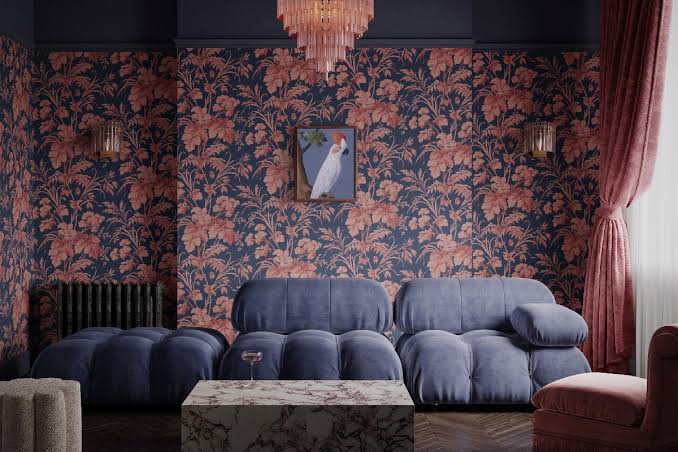
Within the area of design, particularly within the realm of interior design and architecture, the concept of pattern drenching is one that is both exciting and always becoming more advanced. The process of encircling an entire space with a single, coherent design or a highly coordinated collection of patterns is referred to as “enveloping.” The goal is to create a sensory experience that is both daring and immersive, with the intention of immersing the spectator or the person who is residing in the environment in a setting where patterns predominate the visual landscape.
3. Statement lighting
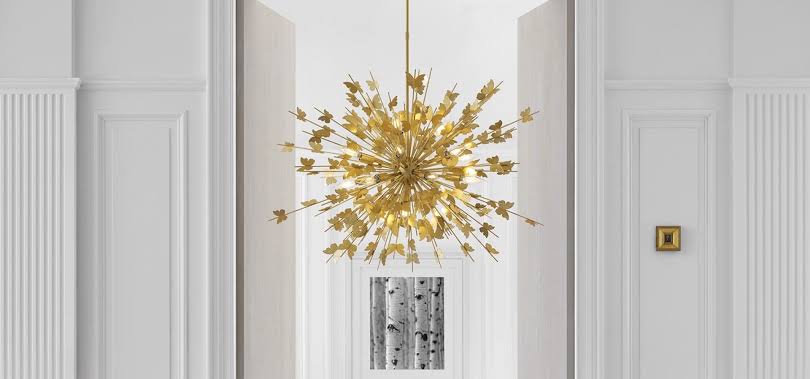
Rather than merely illuminating a place, statement lighting serves as a daring and dramatic focal point that enhances the aesthetic and ambiance of a room. This makes statement lighting a powerful design feature that goes beyond simply illuminating a space. In the realm of contemporary interior design, statement lighting has evolved into a means of showcasing one’s individual sense of style, defining the personality of a space, and establishing a visual focal point that attracts attention and stimulates debate.
4. Art Deco

Art Deco, a phrase that conjures up feelings of sophistication, elegance, and creativity, is widely regarded as one of the most renowned design trends of the 20th century. During the 1920s and 1930s, Art Deco emerged as a distinct style that came to define the interwar period. It had a significant impact on a variety of fields, including architecture, interior design, fashion, jewelry, and even film. Art Deco is a style that continues to be popular and relevant in contemporary design due to the bold geometric patterns, luxury materials, and high-end craftsmanship that it features.
5. Curved furniture
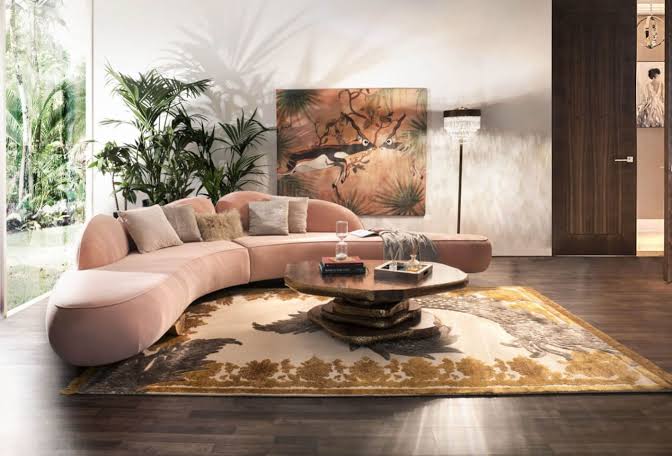
Curved furniture is one of the most intriguing design aspects in contemporary interiors. It provides a welcome contrast from the inflexible, boxy forms that are prevalent in a significant portion of traditional design. Curved furniture, which is characterized by flowing lines and rounded edges, brings an element of softness, warmth, and fluidity to a space, modifying its ambiance with organic shapes that are visually appealing.
6. Earth tones
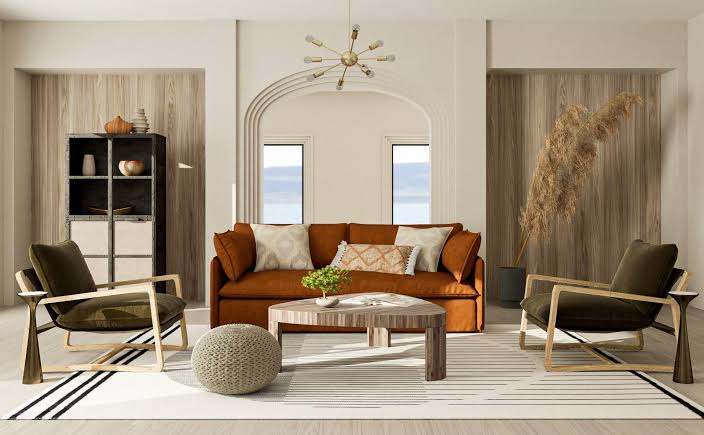
The natural environment serves as a source of inspiration for earth tones, which are a color palette that provides versatility and is ageless. These colors, which include various shades of brown, green, yellow, red, and gray, are reminiscent of the earth itself, including the soil, rocks, trees, and landscapes all of which are depicted in these colors. In the realm of design, earth tones have been valued for a long time due to their capacity to generate an atmosphere that is warm, inviting, and peaceful. This makes them an excellent choice for interior design, fashion design, and graphic design alike.
7. Home wellness spaces
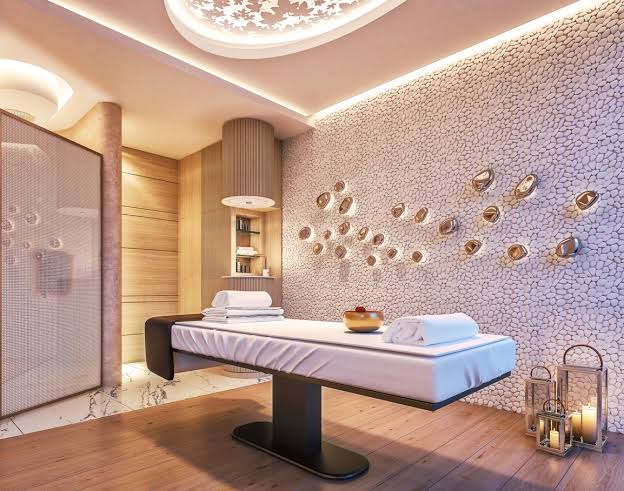
In today’s world, self-care and wellbeing are more vital than they have ever been. The concept of wellness spaces in the home has arisen as an essential component in the promotion of a balanced and healthy lifestyle. This is due to the fact that more and more people are becoming aware of the relationship between physical and mental health. These areas are intended to encourage activities such as relaxation, mindfulness, and rejuvenation. They provide a haven in which persons may concentrate on their health and wellness while remaining in the convenience of their own homes.
8. Statement greenery
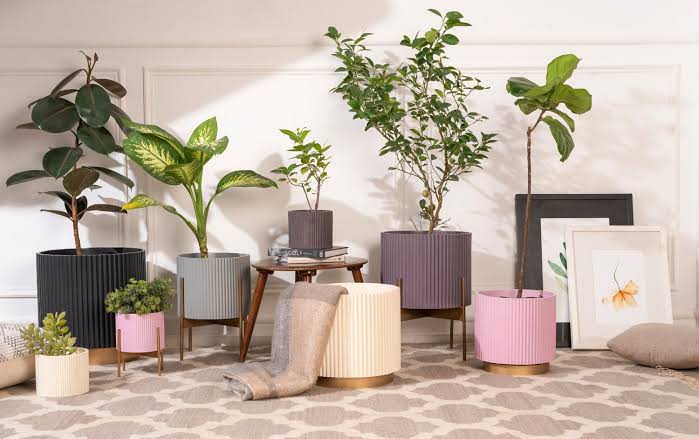
Over the past few years, interior design has begun to acknowledge the transformative potential of plants in the environment. When it comes to making a statement in a room, the term “statement greenery” refers to the utilization of plants that are enormous, bold, and visually stunning. These plants are not merely ornamental components; rather, they are attention-grabbing focal pieces that infuse interior spaces with vitality, energy, and a touch of nature. Statement greenery is becoming an increasingly popular trend in homes, companies, and public areas alike. This trend can be seen in everything from towering palm trees to lush monstera leaves.
9. Textured materials
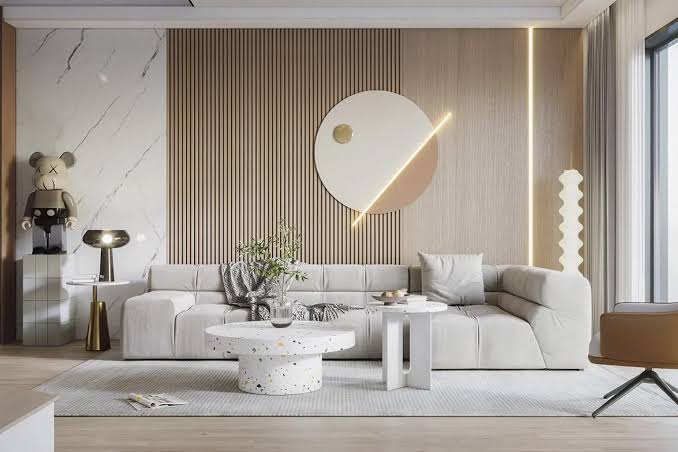
Texture is sometimes counted among the most significant aspects of interior design, right up there with color, light, and arrangement. The term “textured materials” refers to surfaces and materials that, as a result of their distinctive physical features, give elements of visual and tactile interest. One of the most important roles that these materials play is in enhancing the depth, warmth, and character of places, which results in the creation of an immersive experience that extends beyond the visual appeal. Textured materials have the ability to convert an ordinary place into something exceptional. This is true whether you are trying to create a warm and inviting ambiance, add contrast, or improve the visual richness of a room. The variety of textures that are accessible is extensive, ranging from rough-hewn wood to silky fabrics. Each of these textures contributes a unique sensation and flair to the overall style.
10. Wood kitchens

Within the realm of interior design, the kitchen is frequently regarded as the “heart” of the home to many people. When it comes to constructing kitchens that are cozy, inviting, and classic, wood is becoming an increasingly popular material choice. This is because it is a location where functionality and creativity come together. It is possible to include wood into the design of a new kitchen or into the renovation of an existing kitchen, and doing so can add both aesthetic value and functionality to the area. The natural aesthetics, durability, and versatility that wood kitchens offer make them suited for a broad variety of design styles, ranging from traditional to contemporary. Wood kitchens offer the perfect balance of characteristics. In this article, we will discuss the advantages of having a kitchen made of wood, the different kinds of wood that may be used, and some helpful hints for constructing a beautiful wooden kitchen that will withstand the test of time.





